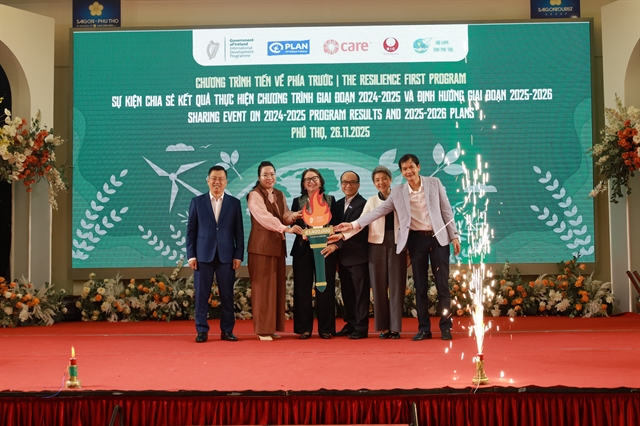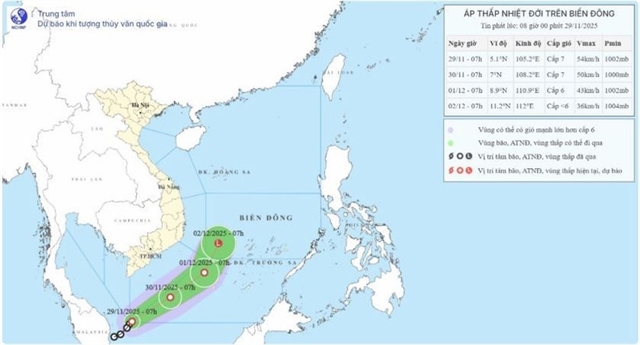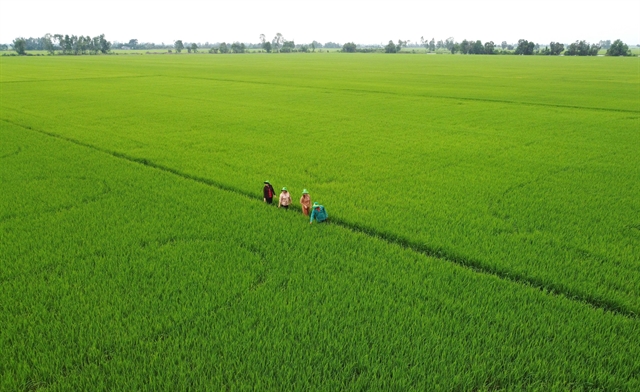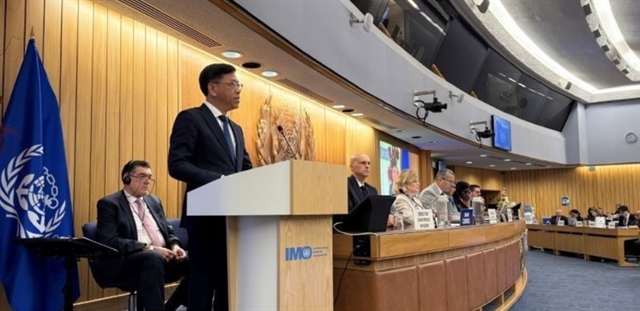 Society
Society

 |
| Rice fields in Thạnh Lợi Commune in Đồng Tháp Province’s Tháp Mười District. — VNA/VNS Photo Nhựt An |
ĐỒNG THÁP — Đồng Tháp Province has increased the development of linkages among stakeholders in growing rice to increase quality and meet export requirements.
Đồng Tháp, which is one of the Cửu Long (Mekong) Delta’s largest rice producing provinces, produces more than 3.3 million tonnes of paddy a year.
More rice farmers in the province, through their co-operatives and co-operative groups, have linked with companies to secure buyers and stable prices and meet export requirements.
The province has 44,455ha of rice planted under the linkages in the first half of the year, accounting for 21 per cent of its rice growing area.
Ngô Thanh Bình in Tháp Mười District’s Tân Kiều Commune said he and other farmers have linked with Việt Nam Rice Company Limited to grow Đài Thơm 8, a high quality rice variety, for three years.
Under the linkage, the company supports farmers with rice seeds and techniques to grow clean rice, and guarantee sales and stable prices, he said.
Under the clean growing method, the yield reaches more than seven tonnes per hectare a crop, and farmers can reduce the use of pesticides and production costs and have high economic efficiency, he said.
Farmers who have joined the linkages earn a profit of VNĐ3-4 million (US$120-160) per hectare a crop higher than those who have no such linkages, according to the province's Department of Agriculture and Rural Development.
Sustainable development
Farmers have increasingly used advanced farming techniques to grow high quality rice and use machines to grow and harvest rice.
All rice fields are tilled by machines and nearly 90 per cent of rice growing areas are sowed by machines.
The use of row sowing and sparse sowing account for 50 per cent of the province’s total rice growing areas, according to the Department of Agriculture and Rural Development.
Trần Văn Tá in Tháp Mười District’s Thạnh Lợi Commune has used sparse sowing in his 11ha of rice fields for many years.
“I use sparse sowing so I can reduce the amount of rice seeds, treat grass easily and control pests well, and thus I can reduce the use of pesticides and fertilisers. As a result, the rice has high quality, production costs are reduced and profit increases,” he said.
Nguyễn Văn Vũ Minh, director of the department, said the province has gradually shifted from growing low-quality varieties to high-quality ones to meet export requirements.
The cultivation of high quality rice varieties, mostly Đài Thơm 8, OM 18, OM 5451, OM 4900, accounts for 69.6 per cent of the province’s total rice growing area, he said.
The province has identified rice as one of its key export products and plans to develop rice production sustainably by establishing high-quality rice growing areas.
It has exported more than 421,000 tonnes of rice worth $240 million so far this year, an increase of 42.7 per cent in volume and 46.8 per cent in value year-on-year.
Nguyễn Thị Thanh Nga, deputy head of the provincial Department of Industry and Trade’s Trade Management Division, said the province has 20 rice companies which have been granted certificates of eligibility to be rice export businesses, and they export rice to 29 markets.
The Chơn Chính Import and Export Company in Tháp Mười District’s Đốc Binh Kiều Commune is one of the largest rice exporters in the province and has exported rice to Asian and European markets.
Trương Văn Chính, the company director, said that to increase rice exports to high requirement markets in Europe, the company is increasing links with farmers to develop high-quality rice growing areas which are strictly managed in cultivation, harvest, post-harvest preservation and processing.
The province aims for all rice growing areas to be granted production codes by 2025.
It has 355ha of code-granted rice growing areas as of June this year, accounting for 25 per cent of its total rice growing areas, according to the Department of Agriculture and Rural Development.
To get the code, the areas must grow rice to Vietnamese good agricultural practices (VietGAP) or other equivalent standards.
Most code-granted areas have switched from growing low-quality rice varieties into growing high-quality ones for export.
The province has participated in various rice growing projects to produce high quality rice for export.
It plans to grow rice on 40,955ha in the 2023-24 winter-spring season under the project “Transforming rice value chains for climate resilient and sustainable development in the Mekong Delta”.
The project aims to promote linkages among stakeholders in rice cultivation and trading, and the application of advanced farming techniques.
The province has registered with the Ministry of Agriculture and Rural Development to participate in a project to sustainably develop one million hectares of high-quality and low-emission rice cultivation associated with green growth in the Mekong Delta.
Under the project, the province aims for its high quality rice growing area to reach 70,000ha by 2025 and 163,000ha by 2030. — VNS




